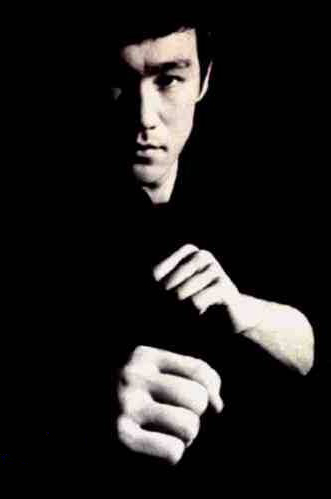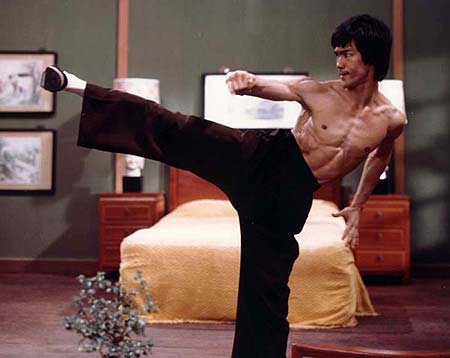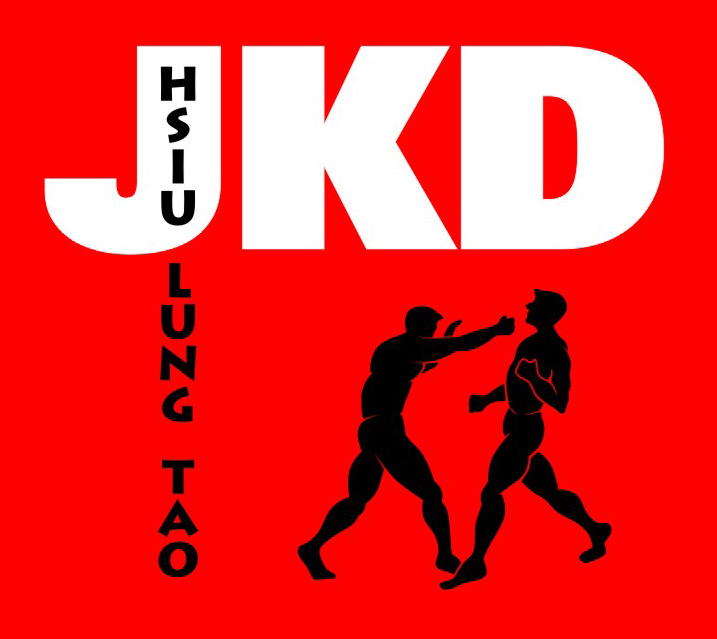| Inspired by time spent with John Carrigan and his Hsiu Lung Tao street defence orientated martial art based on the late Bruce Lee's Jeet Kune Do concepts. |
What is Jeet Kune Do?
JEET KUNE DO = The Way Of The Intercepting Fist Sometimes Bruce would only use a principle from a combat form, like coining the phrase "Stop Hit" from western fencing. This was to become a cornerstone of JKD philosophy, intercepting an opponent just as he is about to strike you. He also adopted steps, terms and the strong side forward stance from fencing. |
The History of Hsiu Lung Tao
What Is HSIU LUNG TAO? Well the literal translation is Little Dragons Way, however it's more than just a name! |
|
Would Bruce Lee at his peak be able to contend with today's top MMA fighters? A question often asked. Bruce in the early 70s would be limited by any rules based fight. He realised this training with Judo maestro Gene LeBell. Bruce would "play nice" and Gene would simply grab him or pick him up. Bruce knew he couldn't defeat or control Gene without really hurting him first. He'd have to deploy strikes to eyes/throat/groin to defeat the larger skilled opponent. Having said that, there was no MMA scene at the time, so the question was largely academic - Bruce had no reason or incentive to develop his fighting style "for the ring". If he had, who knows?! What do the experts think?
While Lee was a great proponent of “MMA” before the term even existed, having blended principles and techniques from Wing Chun (his base) with those taken from boxing, Savate, fencing, and other systems, modern MMA has evolved considerably since his time. In my opinion, he would have some catching up to do in order to be effective against top ranked MMA fighters in, say, a UFC match playing by UFC rules. Lee’s weakness would be his ground game. I think he’d hold up well on striking, but without spending some serious training time on Brazilian Jiu Jitsu and wrestling I think the top guys today would take him to the ground and finish him, either by submission or by wearing him down with ground-and-pound. Of course, anything could happen in a UFC match. Lee’s speed, agility and striking accuracy might enable his to stay on his feet — though we have no idea how good his takedown defense would be. If one attempt to shoot gets past him and he’s taken to the ground, his advantage is lost. If the fight went to the ground, I’d put my bet on Aldo or Edgar over Lee. Bruce Lee was an exceptional athlete though, and always striving to be better. If he lost to one of the above fighters, it wouldn’t surprise me to see him win on a rematch. In terms of work ethic and ability to learn and grow, he’d probably be like Georges St. Pierre (GSP). GSP lost two matches in UFC — once to his idol Matt Hughes and once to Matt Serra. In both cases, he won on the rematch. (Twice against Hughes.) Out of his weight class, I think Bruce Lee would be completely outclassed. GSP, who fought at 169 lbs, would chew him up on the ground. One thing is for sure … Bruce Lee fighting anyone would be the biggest fight card in the history of MMA! |
Other worthy contendersKrav MagaKrav Maga is a military self-defense system developed for the Israel Defense Forces (IDF) and Israeli security forces (Shin Bet and Mossad) that consists of a combination of techniques sourced from boxing, wrestling, aikido, judo, along with realistic fight training. Krav Maga is known for its focus on real-world situations and its extreme efficiency and brutal counter-attacks. It was derived from the street-fighting experience of Hungarian-Israeli martial artist Imi Lichtenfeld, who made use of his training as a boxer and wrestler as a means of defending the Jewish quarter against fascist groups in Bratislava, Czechoslovakia in the mid-to-late 1930s. In the late-1940s, following his migration to Israel, he began to provide lessons on combat training to what was to become the IDF. From the outset, the original concept of Krav Maga was to take the most simple and practical techniques of other fighting styles (originally European boxing, wrestling and street fighting) and to make them rapidly teachable to military conscripts. As a result, Krav Maga has built on its original base in Western boxing, wrestling and street fighting. Krav Maga has a philosophy emphasising aggression, and simultaneous defensive and offensive maneuvers. Krav Maga has been used by the Israel Defense Forces' special forces units, the security apparatus, and by regular infantry units. Closely related variations have been developed and adopted by Israeli law enforcement and intelligence organizations. There are several organizations teaching variations of Krav Maga internationally such as the British SAS and the US Marine Corps. It's not great fun to train, will get you banned in any MMA arena, but it is brutally effective. Brazilian Jiu-jitsuThe Gracie Brothers created the UFC to show off their ground/submission game, and very effective is it, when your opponent gets close. This hybrid mixes Jiu-jitsu’s standing throws and strikes with ground fighting, which emphasizes joint manipulation and overall control of the opponent, the goal to submit or choke-out an opponent. Great for 1-on-1 fighting, with no weapons. Not recommended if you're attacked with a weapon or are against multiple assailants. You might have the greatest triangle choke, but if his mate is kicking you in the head, or he's stabbing you in the thigh - not so good. Western BoxingBruce was a big boxing fan. His brother, the fencer, showed him the benefit on leading with the strongest side. This is akin to a right handed boxer adopting a southpaw stance, which Bruce employed. Boxers throw punches faster, harder and more accurately than any other trained fighter on the planet. At the time of writing McGregor vs Mayweather is imminent. A good MMA fighter against a brilliant boxer in a boxing rules fight!!? Surely just a massive payday for McGregor, 'cause he's got no chance. |

